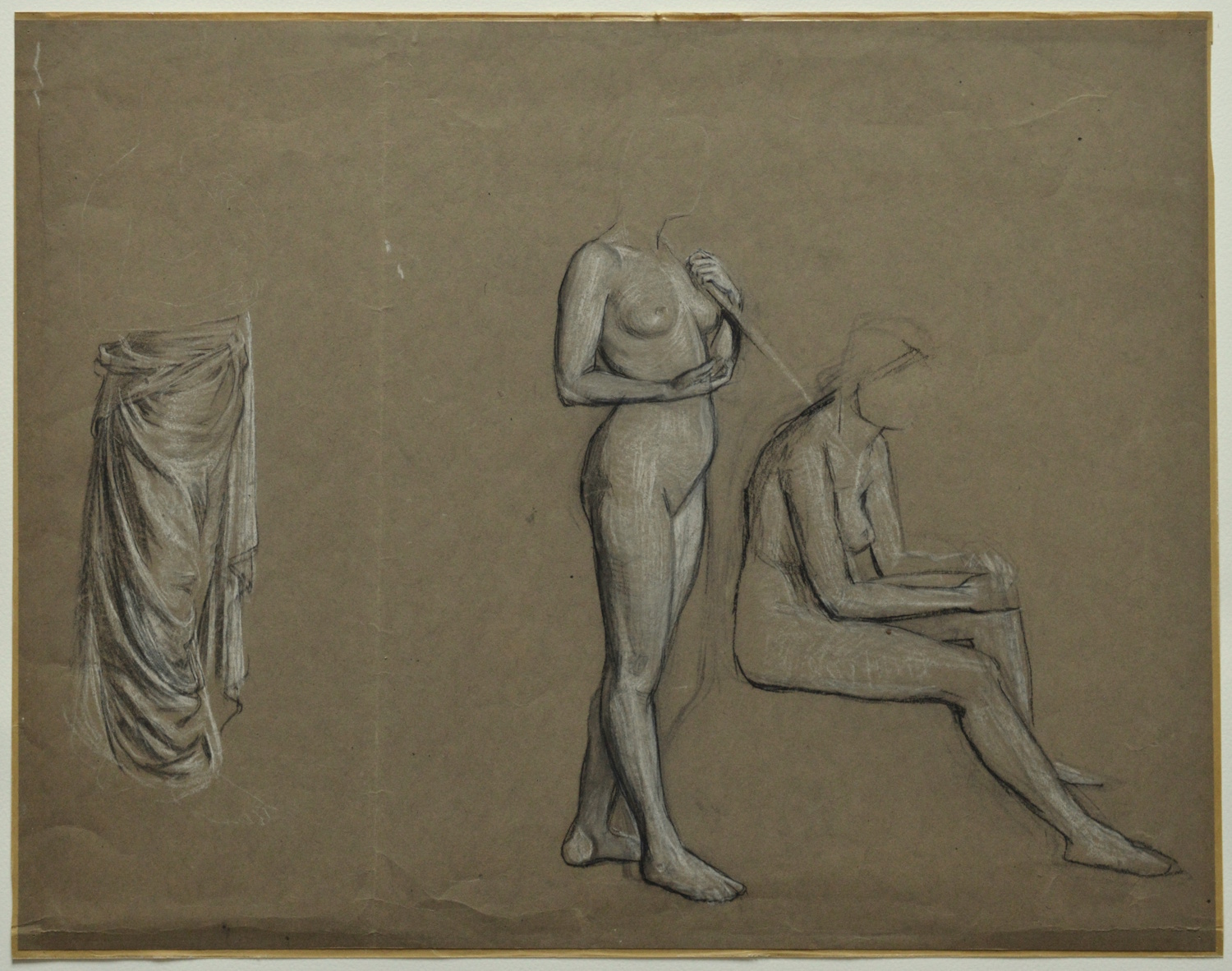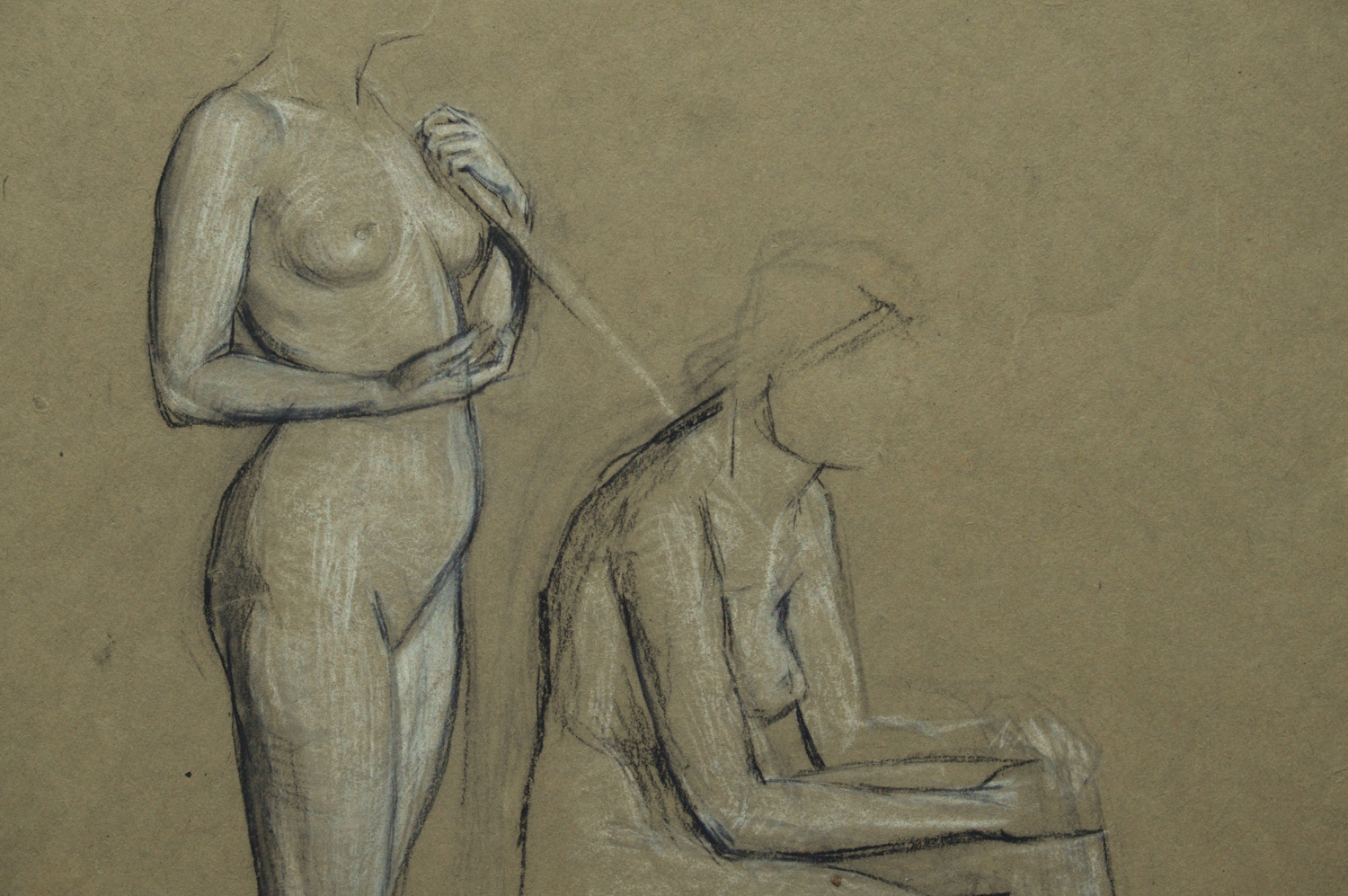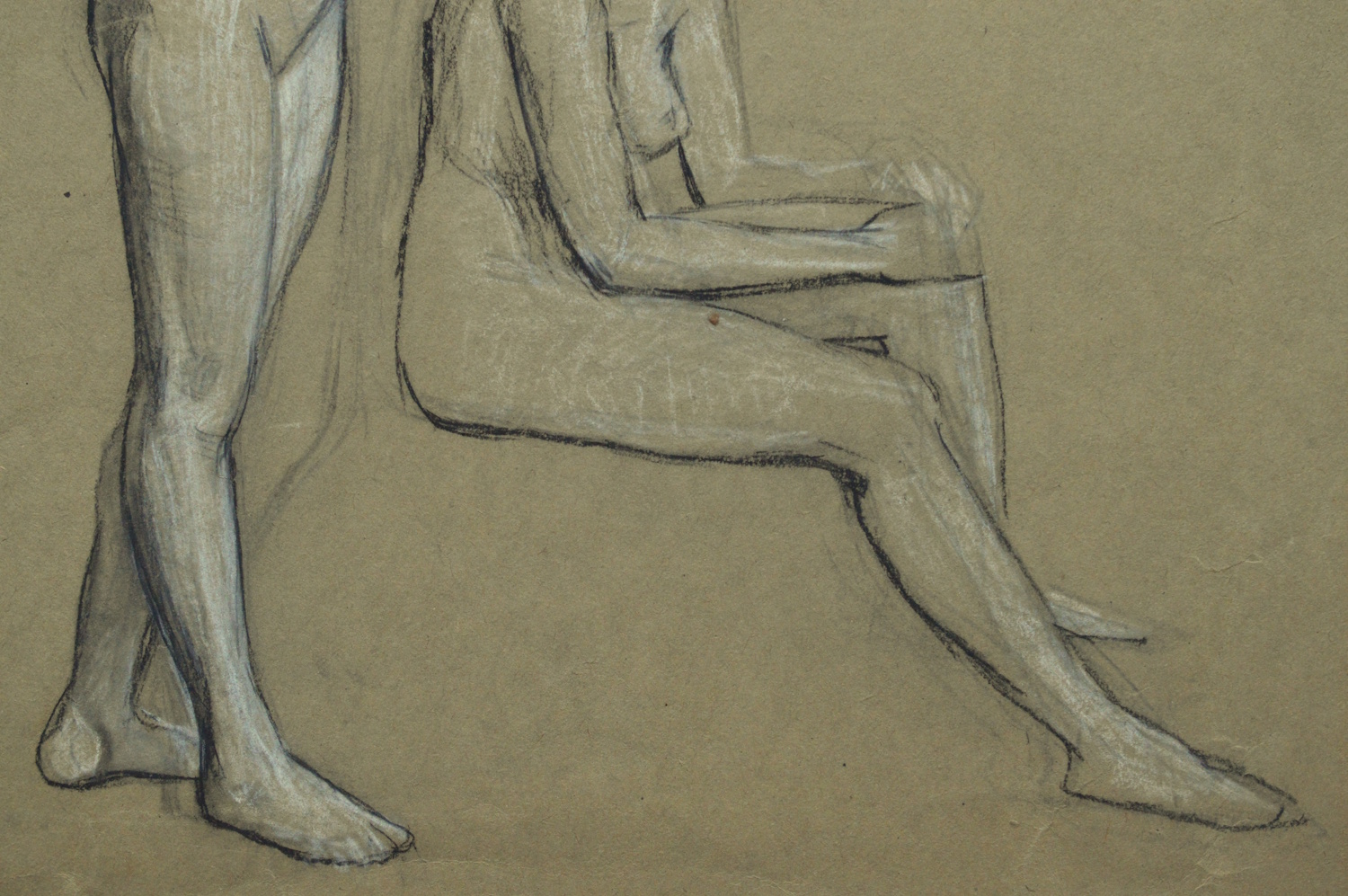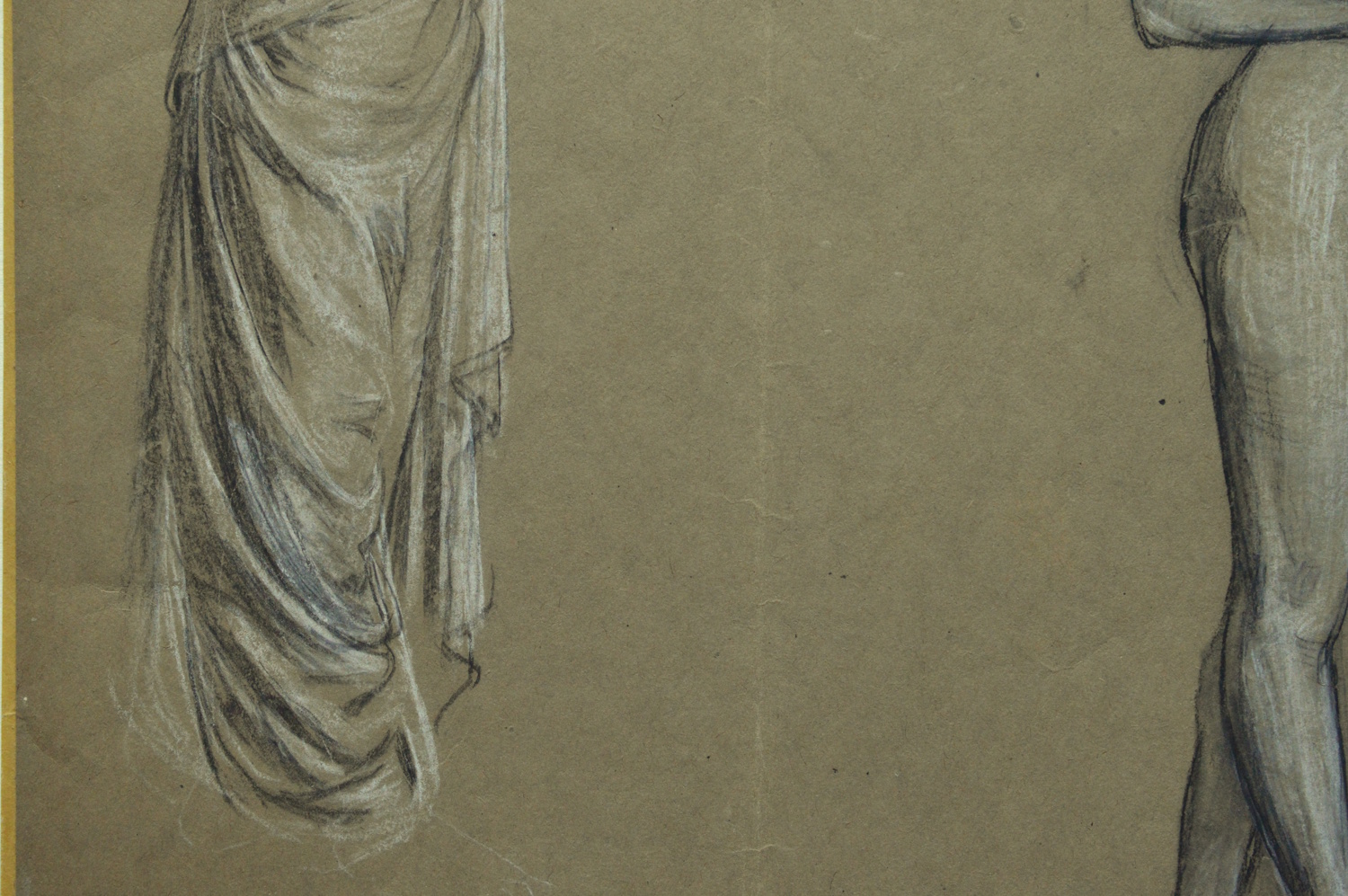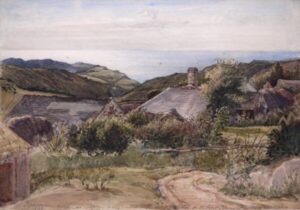Brand
Richmond, Sir William Blake (1842-1921)
William Blake Richmond was a most versatile artist. He was a painter of portraits, narrative pictures and occasionally landscapes. He also made sculpture and was responsible for the mosaic decoration in St. Paul's Cathedral. He was born 1842, the son of the artist George Richmond RA, who named him after his early friend the poet painter and mystic, William Blake.
Richmond attended the Royal Academy Schools, where he was awarded two silver medals. He was influenced by the newly successful Pre-Raphaelite painters Holman Hunt and Millais, but even more by their enthusiastic advocate, the writer and critic John Ruskin. Richmond began his career painting pictures inspired by poetry, classical legend or stories from the Bible. He continued with such subjects until the end of the 19th century. During the 1860s and 70s he became a most successful portrait painter. Amongst others, he painted Charles Darwin, William Morris, the poet Robert Browning and the Prime Minister WE Gladstone twice. Richmond was the Slade Professor of Fine Art between 1878 and 1883. He became a member of the Royal Academy in 1895 and was knighted in 1897. In 1899 he was President of the Society of Miniature Painters. His grandfather Thomas Richmond was a well-known miniature painter.
Richmond's reputation as an artist rests on his portraits and on the large paintings such as 'Venus and Anchises'. At his funeral in February 1921 there were wreathes from Princess Louise, Duchess of Argyll, The Royal Academy and the Coal Smoke Abatement Society, of which Richmond was the founder. His coffin was described in The Times as, 'perfectly plain...and the handles which were of wrought iron, were of William Morris design'.
